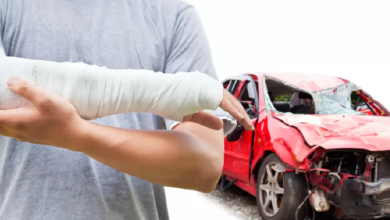Latest Advances in Personal Injury Medical Treatments
Discover the latest advances in personal injury medical treatments that enhance recovery, reduce pain, and improve overall patient outcomes.

The most recent developments in personal injury medicine are changing the face of healthcare by providing patients with options for a quicker and more complete recovery than ever before. These advancements, which include wearable technology and regenerative medicine, not only hasten the healing process but also lessen discomfort and the need for intrusive operations. Patients gain access to increasingly individualised treatment plans that are catered to their particular needs and illnesses as medical research keeps making strides in this direction.
These state-of-the-art therapies are evidence of the amazing advancements in medical technology and science. The development of personal injury care shows a dedication to enhancing patient outcomes and quality of life, from the application of stem cell therapy to the incorporation of telemedicine. The future of personal injury therapy appears brighter with the continued development of these cutting-edge therapies, providing hope and healing to individuals impacted by a variety of injuries.
Latest Advances in Personal Injury Medical Treatments
The Evolution of Personal Injury Treatments
Understanding how far we’ve come in treating personal injuries gives us a greater appreciation for today’s medical technologies. Historically, treatments were rudimentary, relying heavily on rest and basic surgical interventions. Modern techniques, however, harness advanced technology and research to provide more effective and personalized care.
Regenerative Medicine
Overview of Regenerative Medicine
Regenerative medicine is a game-changer in personal injury treatment. It focuses on repairing or replacing damaged tissues through the body’s own repair mechanisms.
Stem Cell Therapy
Stem cell therapy involves using undifferentiated cells that can develop into specialized cell types. This treatment has shown promise in healing injuries that were previously considered irreparable, such as severe spinal cord injuries and joint damage.
Platelet-Rich Plasma (PRP) Therapy
PRP therapy uses a concentration of the patient’s own platelets to accelerate healing of injured tendons, ligaments, muscles, and joints. It has gained popularity due to its effectiveness in treating chronic pain and injuries without surgery.
Minimally Invasive Surgeries
Advancements in Surgical Techniques
Surgical interventions have significantly advanced, with minimally invasive techniques becoming the norm. These procedures typically involve smaller incisions, reducing the risk of infection and speeding up recovery.
Benefits of Minimally Invasive Procedures
Patients benefit from less pain, shorter hospital stays, and quicker return to normal activities. Procedures like arthroscopy for joint injuries and laparoscopic surgeries for abdominal injuries are excellent examples.
Common Minimally Invasive Surgeries for Personal Injuries
Common procedures include arthroscopic surgery for torn ligaments, endoscopic carpal tunnel release, and minimally invasive spine surgery.
Advanced Diagnostic Tools
MRI and CT Scans
Magnetic Resonance Imaging (MRI) and Computed Tomography (CT) scans have revolutionized diagnostics, providing detailed images of internal structures to pinpoint injuries accurately.
Ultrasound Advancements
Advances in ultrasound technology now allow for real-time imaging of soft tissue injuries, improving diagnostic accuracy without radiation exposure.
3D Imaging and Modeling
3D imaging and modeling create detailed visualizations of injuries, aiding surgeons in planning and executing precise interventions.
Pain Management Innovations
New Pain Management Medications
The development of new pain medications offers effective relief with fewer side effects compared to traditional opioids.
Non-Opioid Pain Relief Options
Innovative non-opioid options, including topical analgesics, nerve blocks, and non-steroidal anti-inflammatory drugs (NSAIDs), provide effective pain management with lower risk of dependency.
Neuromodulation Techniques
Neuromodulation, such as spinal cord stimulation, alters nerve activity to manage pain. This technique is particularly beneficial for chronic pain conditions resulting from personal injuries.
Physical Therapy and Rehabilitation
Technological Advancements in Physical Therapy
Technology has enhanced physical therapy with devices like electrical muscle stimulators and cryotherapy equipment.
Virtual Reality and Tele-Rehabilitation
Virtual reality (VR) offers immersive rehabilitation exercises, making therapy more engaging. Tele-rehabilitation allows patients to access physical therapy remotely, ensuring continuity of care.
Robotics in Rehabilitation
Robotic-assisted rehabilitation devices help patients regain movement and strength more efficiently, especially after severe injuries.
Wearable Technology in Injury Recovery
Smart Wearables for Monitoring Recovery
Wearable devices track vital signs, physical activity, and progress, providing real-time data to healthcare providers.
Biofeedback Devices
Biofeedback devices help patients understand and control physiological functions, aiding in pain management and stress reduction.
Advantages of Wearable Tech in Personal Injury Treatment
These technologies offer continuous monitoring, personalized feedback, and improved patient compliance with recovery protocols.
Personalized Medicine
Genetic Testing and Personalized Treatment Plans
Genetic testing identifies individual responses to treatments, allowing for tailored therapy plans that maximize efficacy and minimize side effects.
Pharmacogenomics in Personal Injury Recovery
Pharmacogenomics studies how genes affect a person’s response to drugs, optimizing medication choices for better recovery outcomes.
Telemedicine and Remote Consultations
Growth of Telemedicine in Personal Injury Care
Telemedicine has expanded, offering convenient access to specialist consultations without the need for travel.
Benefits of Remote Consultations
Remote consultations provide timely medical advice, reducing the burden on emergency services and enabling continuous care.
Case Studies
Numerous case studies highlight the effectiveness of telemedicine in managing personal injuries, showcasing improved patient satisfaction and outcomes.
Psychological Support and Treatment
Importance of Mental Health in Recovery
Mental health plays a crucial role in physical recovery. Addressing psychological well-being can significantly enhance the healing process.
Innovative Psychological Therapies
Innovative therapies such as cognitive-behavioral therapy (CBT) and mindfulness-based stress reduction (MBSR) are integrated into recovery plans.
Integration of Mental Health Support in Injury Treatment Plans
Holistic treatment plans that include psychological support show better overall outcomes for personal injury patients.
Integrative and Holistic Approaches
Combining Traditional and Alternative Treatments
Integrative medicine combines conventional treatments with alternative therapies to address all aspects of health.
Acupuncture, Chiropractic Care, and Massage Therapy
These alternative therapies provide pain relief, improve mobility, and promote overall well-being.
Nutritional Support for Recovery
Role of Nutrition in Healing
Proper nutrition is essential for tissue repair and overall recovery.
Nutritional Supplements and Their Benefits
Supplements like omega-3 fatty acids, vitamins, and minerals support the healing process and enhance recovery.
Future Trends in Personal Injury Medical Treatments
Predictions for the Next Decade
The future holds exciting possibilities, including advanced biotechnologies and AI-driven treatments.
Emerging Technologies and Treatments
Developments in nanotechnology, gene therapy, and regenerative medicine promise to revolutionize personal injury care.
Read More: Common Mistakes in Personal Injury Claims and How to Avoid Them
Conclusion
The prognosis for people healing from a variety of injuries has greatly improved thanks to recent advancements in personal injury medical treatments. Innovative medical technology like minimally invasive surgery, regenerative medicine, and sophisticated diagnostic tools enable healthcare providers to provide more efficient and individualised care. These advancements not only expedite recuperation periods but also improve patients’ quality of life overall by decreasing discomfort and lowering the necessity for major surgical procedures. Patients are able to resume their regular activities more rapidly and confidently as a result.
Future developments in personal injury medicine should bring about even more noteworthy discoveries. By combining wearable technology, telemedicine, and personalised medicine, treatment regimens will be further improved and refined, guaranteeing that each patient’s demands are met specifically. Furthermore, the increasing focus on integrative and holistic methods emphasises how critical it is to treat both the psychological and physical components of healing. The treatment of personal injuries has a bright future ahead of it, with continued research and development providing fresh hope and better results for those who suffer injuries.
FAQs
What are the latest treatments for personal injuries?
The latest treatments include regenerative therapies like stem cell and PRP therapy, minimally invasive surgeries, and advanced pain management techniques.
How do regenerative medicine treatments work?
Regenerative medicine treatments, such as stem cell and PRP therapy, use the body’s own repair mechanisms to heal damaged tissues.
Are minimally invasive surgeries effective for all types of personal injuries?
While not suitable for all injuries, minimally invasive surgeries are highly effective for many joint, ligament, and soft tissue injuries.
How does wearable technology assist in injury recovery?
Wearable technology provides real-time monitoring and feedback, helping patients and healthcare providers track progress and adjust treatment plans as needed.
What is the role of nutrition in personal injury recovery?
Proper nutrition supports tissue repair and overall recovery, with supplements like omega-3s, vitamins, and minerals playing a key role in healing.











